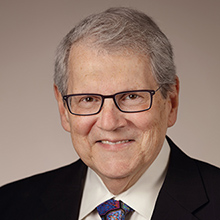
Dear Colleagues:
Collaboration across disciplines can inspire scientists to consider problems from new perspectives and yield creative new approaches to solving them. To this end, the NIAMS engages partners across the National Institutes of Health (NIH), and the researchers we fund, to encourage and support interdisciplinary research. In addition, we often hear from the community about the importance of opportunities to work with researchers in other fields. For example, during listening sessions for the evaluation of our Centers program, support for interdisciplinary team science emerged as a key strategy for spurring innovation.
Investigators discussing research gaps and opportunities in areas of shared interest is an important first step in advancing interdisciplinary science. Whenever possible, we include researchers from a variety of fields in our annual NIAMS roundtable meetings, which are a key part of the NIAMS’ long-range planning. Our roundtables on scleroderma, psoriatic arthritis, and 3-D tissue models are examples of meetings that bridged disciplines and included experts from multiple NIH Institutes, Centers, and Offices. These meetings help raise awareness among participants of relevant efforts across the NIH.
We also work to ensure that NIAMS-supported researchers are represented in trans-NIH meetings that are important to our communities. Our staff played a central role in planning a March 2018 NIH conference exploring the relationships between cancer, autoimmunity, and immunology. The event featured a number of NIAMS grantees and included a session devoted to the intersection of rheumatological syndromes and cancer. In support of the All of Us precision medicine program, the NIAMS helped organize a research priorities workshop in March. We encouraged scientists and patient advocacy groups in our mission areas to offer input and participate.
I encourage NIAMS grantees to stay up to date on trans-NIH initiatives, which, in addition to providing research support, offer opportunities to connect with investigators from a broad range of areas. Programs like the Rare Diseases Clinical Research Network enable scientists from multiple disciplines to advance research on rare diseases, and the NIH plans to solicit new consortia for this program. Through the HEAL (Helping to End Addiction Long-term) Initiative, the NIH is marshalling its Institutes and Centers, and the researchers they support, to combat opioid misuse. At our Council meeting in June 2018, viewable via videocast, we highlighted two other NIH-wide efforts. We discussed implementation of the regenerative medicine provisions of the 21st Century Cures Act. Notably, the first round of funding for the regenerative medicine initiative resulted in funding for a NIAMS-supported investigator. We also discussed enhanced collaboration in pediatric research, including a new trans-NIH consortium. We are working to keep our grantees informed about these and other trans-NIH opportunities for which they are eligible.
Researchers sometimes ask how they can learn more about what the NIH supports so that they can identify potential collaborators in other fields. RePORTER (the Research Portfolio Online Reporting Tool-Expenditure and Results) is a database of NIH-supported projects that enables researchers and organizations to see what the agency is funding. The NIH added a tool called “MatchMaker” to RePORTER, which makes it easier for researchers to use key words or longer text to find projects that are similar to one another. The resource also identifies the investigators and program officials associated with those projects.
There are many talented investigators with a range of expertise and funding sources conducting research relevant to diseases of the bones, joints, muscles, and skin. Interactions among them have tremendous potential to spark scientific discoveries.
Stephen I. Katz, M.D., Ph.D.
Director
National Institute of Arthritis and Musculoskeletal and Skin Diseases
National Institutes of Health
